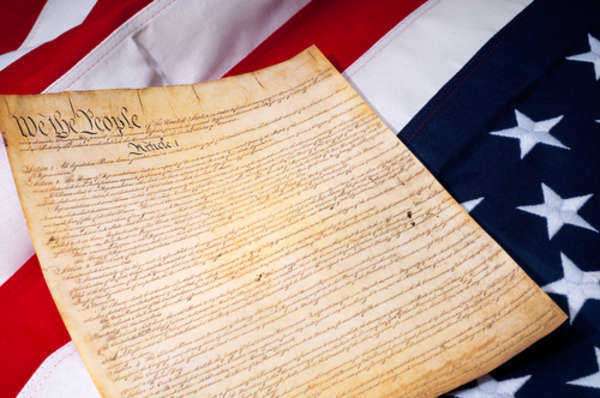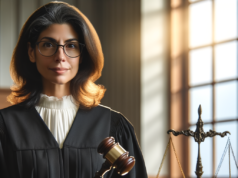Table of Contents

2ND AMENDMENT – OVERVIEW, CASES AND DECISIONS TIMELINE
The Second Amendment of the United States Constitution, ratified in 1791, grants citizens the right to bear arms. This amendment has had an enormous impact on the interpretation of firearms-related law in the United States, leading to a vast array of significant legal decisions. In this article, we will discuss the major court decisions related to the Second Amendment and how these cases have shaped interpretations of this crucial constitutional right.
1792 – The Militia Act
Enacted one year after the Second Amendment’s ratification, The Militia Act of 1792 provided instructions for the organization of state militias. This law reinforced the Constitution’s intent that citizens had the right to bear arms. It stated that “every citizen so enrolled and notified, shall… provide himself with a good musket or firelock… with a sufficient bayonet and belt.”
1934 – National Firearms Act
In 1934, Congress passed the National Firearms Act, which regulated the sale of certain types of firearms, including machine guns and sawed-off shotguns. This was the first major federal gun law, marking a significant change in the interpretation of the Second Amendment’s application. In United States v. Miller in 1939, the Supreme Court upheld the National Firearms Act, stating that the possession of a sawed-off shotgun had no “reasonable relationship to the preservation or efficiency of a well-regulated militia.”
1976 – Buckley v. Valeo
In the Buckley v. Valeo case in 1976, the Supreme Court found that individuals’ rights to political speech included the ability to conduct campaign finance activities without restriction. Although not directly concerning firearms or the Second Amendment, this case established the concept of strict scrutiny in legal cases involving constitutional rights. This would become an essential framework for future Second Amendment cases.
1982 – City of Chicago v. Morales
City of Chicago v. Morales in 1982 examined a city ordinance that gave police officers the ability to detain individuals who were believed to be gang members or associates. The Supreme Court found the law to be unconstitutional since it gave law enforcement subjective authority to detain individuals based on poor evidence and without the individual’s protections in the judicial system. This case helped strengthen the “presumption of innocence” in legal cases, which would later be an essential factor in future Second Amendment cases.
1991 – United States v. Verdugo-Urquidez
In United States v. Verdugo-Urquidez in 1991, the Supreme Court examined whether U.S. law enforcement agents could search and seize property from Mexico without violating the Fourth Amendment rights of Mexican nationals who were not yet present physically in the U.S. The Court found that constitutional protections extended only to people within the jurisdiction of the U.S. The case helped reinforce the understanding that U.S. constitutional rights extend only to those within U.S. borders.
2008 – District of Columbia v. Heller
District of Columbia v. Heller in 2008 marked a significant shift in the interpretation of the Second Amendment by the Supreme Court. The case centered around a Washington D.C. law that prohibited handguns in homes. The Supreme Court struck down the ban, stating that the Second Amendment affirms an individual’s right to own and keep firearms for self-defense purposes, and that this right is not limited only to the context of a well-regulated militia.
2010 – McDonald v. Chicago
McDonald v. Chicago in 2010 built on the Heller decision. This case concerned a Chicago law that barred people from keeping handguns within city limits. The Supreme Court declared the ban to be unconstitutional, stating that the Second Amendment applies not only to the federal government, but also to state and local governments, and that the right to bear arms is an individual right protected by the Constitution.
2012 – United States v. Jones
In United States v. Jones in 2012, law enforcement personnel put a GPS tracking device on an individual’s vehicle without a warrant. The Supreme Court found that this action violated the Fourth Amendment rights of the individual, stating that installation of a GPS device on a vehicle constituted a “search” that must be authorized by a warrant. This case helped extend Fourth Amendment protections to digital-based intrusions.
2014 – Drake v. Filko
In Drake v. Filko in 2014, the Third Circuit Court of Appeals in Philadelphia struck down a law provision in New Jersey that limited gun ownership to individuals who could demonstrate a “justifiable need.” The Court found that such a requirement was overly restrictive and did not allow individuals an adequate opportunity to use firearms for self-defense.
2016 – Caetano v. Massachusetts
In Caetano v. Massachusetts, the Supreme Court addressed the issue of stun guns and their relation to the Second Amendment. The case centered around a Massachusetts law that banned the possession of stun guns. The Supreme Court unanimously ruled that the ban was unconstitutional, stating that stun guns are “bearable arms” that are protected under the Second Amendment.
2020 – New York State Rifle and Pistol Association v. City of New York
New York State Rifle and Pistol Association v. City of New York involved a New York City law that limited the transport of guns within the city. The Supreme Court did not rule on the constitutionality of the law since it had been modified. However, the decision did reaffirm the individual right to bear arms and indicated that the Court may consider future Second Amendment challenges.
Conclusion
The Second Amendment grants citizens the right to bear arms, marking a fundamental constitutional right in the U.S. This Amendment has influenced the interpretation of firearms-related law, impacting the nation significantly. The historical legal decisions discussed above guide our understanding of this crucial constitutional right, such as The Militia Act of 1792, National Firearms Act of 1934, United States v. Miller, District of Columbia v. Heller, McDonald v. Chicago, United States v. Jones, Drake v. Filko, Caetano v. Massachusetts, and New York State Rifle and Pistol Association v. City of New York. The continuing debate surrounding the Second Amendment will undoubtedly lead to more significant legal challenges and decisions, reshaping the understanding of firearms regulation in the U.S.
Exploring State Laws and the Second Amendment: A Comprehensive Analysis Across All 50 US States
The Second Amendment of the United States Constitution, a cornerstone of American legal doctrine, grants citizens the right to bear arms. While this right is enshrined at the federal level, each U.S. state possesses the authority to implement its own regulations pertaining to firearms and gun ownership. In this comprehensive analysis, we delve into the diverse landscape of state laws related to the Second Amendment across all 50 states. This exploration sheds light on the nuances of firearm regulations, reflecting each state’s unique perspective on balancing individual rights and public safety.
Alabama: Striking a Balance
Alabama’s state laws reflect a balanced approach to gun ownership. The state recognizes both open and concealed carry, offering concealed carry permits to qualified individuals. Alabama law outlines various locations where carrying firearms is restricted, demonstrating the state’s commitment to public safety. The state also upholds the Castle Doctrine, permitting individuals to use deadly force in self-defense within their homes. Alabama’s firearm regulations reflect its commitment to preserving the Second Amendment while maintaining measures to protect citizens.
Alaska: Emphasizing Rights and Responsibility
Alaska’s state laws emphasize the constitutional right to bear arms while emphasizing responsible gun ownership. The state boasts an open carry policy without the need for a permit. Concealed carry permits are also available for individuals who undergo background checks and training. Alaska’s Stand Your Ground law allows individuals to use deadly force in self-defense outside of their homes. Alaska’s approach to firearm regulations aligns with its commitment to individual freedoms while encouraging responsible firearm use.
Arizona: Fostering Freedom
Arizona’s state laws reflect a pro-Second Amendment stance, fostering an environment that supports gun rights. The state permits both open and concealed carry without the need for a permit, reflecting its commitment to individual freedoms. Arizona’s Castle Doctrine allows individuals to use force, including deadly force, to defend themselves in their homes and vehicles. The state’s approach to firearm regulations mirrors its emphasis on personal liberties while ensuring public safety.
Arkansas: Enforcing Firearm Safety
Arkansas’ state laws emphasize both individual rights and firearm safety. The state allows open carry without a permit but requires a concealed carry permit for carrying concealed firearms. Arkansas law prohibits carrying firearms in specific locations, such as schools and government buildings, demonstrating the state’s commitment to public safety. The Castle Doctrine is also recognized, permitting individuals to use deadly force for self-defense within their homes. Arkansas’ firearm regulations underscore the importance of responsible gun ownership while protecting citizens’ rights.
California: Stricter Regulations for Public Safety
California’s state laws reflect a more regulated approach to firearm ownership, prioritizing public safety. The state requires individuals to obtain a permit for both open and concealed carry. California’s list of prohibited firearm models is extensive, and the state enforces background checks for all firearm transfers, including private sales. The state’s firearm regulations are geared towards maintaining public safety while navigating the complexities of Second Amendment rights.
Colorado: Balancing Rights and Regulation
Colorado’s state laws emphasize a balance between Second Amendment rights and firearm regulation. The state permits open carry without a permit, while concealed carry requires a permit. Background checks are mandatory for firearm purchases from licensed dealers, reflecting the state’s commitment to responsible gun ownership. Colorado’s firearm regulations strive to safeguard public safety while upholding individual rights.
Connecticut: Prioritizing Public Safety
Connecticut’s state laws reflect a focus on public safety through stricter firearm regulations. The state mandates background checks for all firearm sales and transfers, including private sales. Connecticut requires individuals to obtain a permit for both open and concealed carry, demonstrating the state’s commitment to regulating firearm ownership. The state’s firearm regulations prioritize public safety while respecting Second Amendment rights.
Delaware: Ensuring Accountability
Delaware’s state laws reflect a balanced approach to firearm ownership while emphasizing accountability. The state requires individuals to obtain a permit for both open and concealed carry. Delaware enforces background checks for all firearm sales, including private sales, ensuring responsible gun ownership. The state’s firearm regulations underscore its commitment to public safety and accountability in firearm transactions.
Florida: Balancing Rights and Regulations
Florida’s gun laws reflect a balance between individual rights and public safety concerns. The state permits concealed carry of firearms and has a “stand your ground” law, allowing individuals to use deadly force if they feel threatened. However, Florida also enforces background checks for all firearm sales and mandates a three-day waiting period for handgun purchases. The state’s comprehensive approach aims to safeguard citizens while respecting the right to bear arms.
Georgia: Expansive Gun Rights
Georgia’s state laws emphasize the expansive interpretation of the Second Amendment. The state recognizes the right to bear arms for both self-defense and hunting. Georgia has implemented “campus carry” laws, allowing licensed individuals to carry firearms on public college campuses. Additionally, the state has preemption laws that limit local governments from passing restrictive gun regulations, ensuring consistency across the state.
Hawaii: Stringent Regulation
Hawaii’s gun laws diverge from many other states, with an emphasis on stringent regulation. The state requires individuals to obtain permits to purchase firearms, which involve background checks and safety training. Hawaii also has strict restrictions on carrying firearms in public places. While the state recognizes the right to bear arms, its regulations prioritize public safety and controlled access to firearms.
Idaho: Fostering a Firearm-Friendly Environment
Idaho’s state laws align closely with the Second Amendment’s intent. The state permits open carry of firearms without a permit and also issues concealed carry permits for handguns. Idaho’s approach to firearm ownership is generally permissive, reflecting the state’s commitment to upholding individual rights and fostering a firearm-friendly environment.
Illinois: Striking a Balance
Illinois’ gun laws reflect a balance between gun rights and public safety. The state requires individuals to obtain a Firearm Owner’s Identification (FOID) card before purchasing firearms or ammunition. While Illinois recognizes the right to bear arms, it also enforces background checks for all gun sales, including private transactions. The state’s regulations aim to ensure that firearms do not fall into the wrong hands.
Indiana: Protecting the Right to Bear Arms
Indiana’s state laws prioritize the protection of the right to bear arms. The state issues handgun licenses for concealed carry, and it recognizes the validity of out-of-state permits. Indiana’s approach aligns closely with the Second Amendment’s intent while establishing mechanisms for responsible gun ownership.
Iowa: Balancing Accessibility and Accountability
Iowa’s gun laws emphasize accessibility to firearms while maintaining accountability. The state permits open carry of firearms without a permit, and it issues permits for concealed carry. Iowa also enforces background checks for private handgun sales and requires a permit to acquire handguns from licensed dealers. The state’s approach seeks to balance individual rights with responsible gun ownership.
Kansas: Prioritizing Individual Rights
Kansas’ gun laws align with the state’s commitment to individual rights. The state permits both open carry and concealed carry of firearms without a permit. Kansas also has preemption laws that prevent local governments from enacting gun regulations that differ from state laws. The state’s approach emphasizes personal freedoms and gun rights.
Kentucky: Protecting the Right to Bear Arms
Kentucky, a state with a strong historical connection to firearms, upholds the 2nd Amendment with a robust legal framework. The state’s constitution emphasizes the right to bear arms for self-defense and the security of the state. While open carry is generally allowed without a permit, concealed carry requires a license. Kentucky ensures that its residents can exercise their 2nd Amendment rights while maintaining regulations to ensure responsible firearm ownership.
Louisiana: Embracing Firearms Heritage
Louisiana, with its rich cultural tapestry, respects the right to bear arms while maintaining its commitment to public safety. The state’s constitution mirrors the 2nd Amendment’s intent, allowing citizens to possess and carry firearms. Concealed carry permits are obtainable, providing a balance between individual rights and regulated access to firearms. Louisiana’s laws reflect its recognition of firearms as a part of its historical and cultural heritage.
Maine: Enshrining Individual Freedoms
In Maine, the state constitution echoes the 2nd Amendment’s principles, ensuring the right of individuals to bear arms for self-defense. The state upholds this right while incorporating necessary regulations to safeguard public safety. Maine’s laws support both open and concealed carry, highlighting the importance of individual liberties while emphasizing responsible firearm ownership.
Maryland: Balancing Rights and Public Safety
Maryland navigates the 2nd Amendment landscape by striking a balance between individual rights and public safety concerns. The state constitution acknowledges the right to keep and bear arms for personal defense while allowing for reasonable regulations. Maryland’s firearm laws encompass background checks, waiting periods, and the requirement of a handgun qualification license for concealed carry. This approach underscores the state’s commitment to safeguarding citizens while respecting constitutional freedoms.
Massachusetts: Prioritizing Public Safety
Massachusetts approaches the 2nd Amendment with a strong focus on public safety. While the state constitution recognizes the right to keep and bear arms for self-defense, Massachusetts implements strict regulations to prevent firearm-related incidents. The state requires firearm licenses for both possession and carry, coupled with background checks and firearm safety courses. Massachusetts’ approach demonstrates its dedication to balancing individual rights with comprehensive safety measures.
Michigan: Safeguarding Firearm Ownership
Michigan, with a diverse population, embraces the 2nd Amendment while promoting responsible firearm ownership. The state’s constitution enshrines the right to keep and bear arms, reflecting the federal provision. Michigan allows open carry without a permit, and concealed carry is attainable through a licensing process. The state’s laws underscore the importance of lawful firearm ownership and responsible usage.
Minnesota: Ensuring Responsible Firearm Use
Minnesota’s approach to the 2nd Amendment emphasizes responsible firearm use. The state constitution, while recognizing the right to keep and bear arms for self-defense, also allows for regulations to ensure public safety. Minnesota requires permits for both open and concealed carry, complemented by background checks and training requirements. This approach underscores the state’s commitment to striking a balance between individual rights and community well-being.
Mississippi: Upholding Traditional Values
Mississippi’s strong connection to firearms is reflected in its approach to the 2nd Amendment. The state’s constitution ensures the right to keep and bear arms, in alignment with federal principles. Open carry is generally allowed without a permit, and concealed carry permits are obtainable. Mississippi’s laws uphold its commitment to the preservation of individual rights while maintaining a foundation of responsible firearm ownership.
Missouri: Protecting Gun Rights
Missouri’s state laws underscore its commitment to the 2nd Amendment, emphasizing the right of citizens to bear arms for both self-defense and other lawful purposes. The state’s constitution explicitly recognizes this right, ensuring that the government shall not infringe upon it. Missouri’s laws focus on promoting gun ownership and self-defense, allowing individuals to openly carry firearms without a permit in most public spaces.
Montana: Preserving Traditional Values
Montana’s laws reflect a strong adherence to the traditional values associated with firearms ownership. With a culture deeply rooted in hunting and outdoor activities, the state’s regulations prioritize the right to bear arms for self-defense and sporting purposes. Montana’s laws generally emphasize minimal restrictions on gun ownership, including limited requirements for background checks, recognizing the state’s dedication to preserving its unique heritage.
Nebraska: Balancing Rights and Regulation
Nebraska’s state laws take a balanced approach to firearms regulation, respecting the 2nd Amendment while addressing public safety concerns. The state grants its citizens the right to bear arms, but it also enforces background checks for firearm purchases from licensed dealers. Nebraska’s laws exhibit an effort to maintain a delicate equilibrium between protecting gun rights and ensuring responsible gun ownership.
Nevada: Enabling Individual Choice
Nevada’s laws embrace the diversity of perspectives on gun rights, acknowledging both the importance of self-defense and the need for safety measures. The state allows open carry without a permit, mirroring its respect for individual choice and rights. While Nevada facilitates the exercise of the 2nd Amendment, it also imposes background checks for firearm sales, reflecting a proactive approach to addressing potential risks associated with gun ownership.
New Hampshire: Fostering a Culture of Responsibility
New Hampshire’s laws promote responsible gun ownership while safeguarding the 2nd Amendment. The state’s “Live Free or Die” spirit is evident in its laws, which allow open carry without a permit and uphold the right to self-defense. New Hampshire also offers concealed carry permits for those who choose to carry concealed firearms. The state’s laws reflect a commitment to both individual liberties and public safety.
New Jersey: Striking a Regulatory Balance
New Jersey’s approach to firearms regulation reflects its desire to balance the 2nd Amendment with stringent safety measures. The state enforces comprehensive background checks, requiring permits for both concealed and open carry. New Jersey’s laws prioritize public safety by imposing restrictions on the carrying of firearms in certain places and emphasizing the importance of responsible gun ownership.
New Mexico: Recognizing Local Autonomy
New Mexico’s state laws encompass a respect for the 2nd Amendment while granting local authorities some autonomy in regulating firearms. The state recognizes the right to bear arms for self-defense and lawful purposes, but local jurisdictions are allowed to establish additional regulations. This approach acknowledges the diversity of needs within the state and fosters a sense of community involvement in shaping firearm regulations.
New York: Addressing Urban Challenges
New York’s state laws reflect a unique stance on gun regulation, influenced by the challenges of urban environments. The state enforces stringent gun control measures, requiring permits for both open and concealed carry. New York City, in particular, has more restrictive regulations, reflecting the urban nature of the area. These laws underscore the state’s commitment to addressing public safety concerns in densely populated regions.
North Carolina: Regulating Concealed Carry
North Carolina law permits concealed carry of firearms for qualified individuals who obtain a concealed handgun permit. Applicants must meet specific requirements, including age, residency, and completion of firearm training. The state also prohibits concealed carry in certain locations, such as educational institutions and government buildings.
North Dakota: Constitutional Carry
North Dakota embraces constitutional carry, allowing individuals to carry concealed firearms without a permit. While this aligns with the Second Amendment’s intent, certain restrictions apply, such as prohibiting carrying in government buildings and schools.
Ohio: Concealed Carry Licensing
Ohio offers concealed carry licenses to eligible individuals. The state requires applicants to undergo background checks and complete training courses. Ohio law prohibits concealed carry in certain places, such as schools and government facilities.
Oklahoma: Open Carry and Self-Defense Laws
Oklahoma allows open carry of firearms for those with a valid handgun license. The state also recognizes the “Stand Your Ground” principle, permitting individuals to use deadly force in self-defense if they believe their life is in danger.
Oregon: Background Checks and Gun Sales
Oregon mandates background checks for all firearm sales, including private transfers. The state also permits concealed carry with a valid license. Restrictions apply to carrying in certain public places.
Pennsylvania: Concealed Carry and State Preemption
Pennsylvania law requires a license for concealed carry, with background checks and training prerequisites. The state enforces preemption laws, ensuring uniform firearm regulations across municipalities.
Rhode Island: Concealed Carry Permits
Rhode Island issues concealed carry permits subject to background checks and character references. While the state upholds the Second Amendment, it enforces stringent regulations to ensure responsible gun ownership.
South Carolina: Concealed Weapons Permits
South Carolina grants concealed weapons permits, enabling individuals to carry concealed handguns. Applicants undergo background checks, and the state adheres to specific regulations regarding firearm sales and possession.
South Dakota: Constitutional Carry and Enhanced Permits
South Dakota embraces constitutional carry, allowing individuals to carry concealed firearms without a permit. The state also offers enhanced permits for reciprocity in other states, ensuring legal concealed carry during travel.
Tennessee: Open Carry and Firearm Regulations
Tennessee permits open carry of firearms, subject to specific restrictions. The state enforces background checks for private firearm sales and maintains regulations regarding firearms in public places.
Texas: Concealed and Open Carry
Texas offers concealed carry licenses and permits open carry for those with licenses. The state also recognizes the “Castle Doctrine,” granting legal protections for individuals who use deadly force in their homes or vehicles.
Utah: Concealed Firearm Permits
Utah issues concealed firearm permits, requiring applicants to complete training courses and background checks. The state enforces reciprocity agreements with other states for legal concealed carry across borders.
Vermont: Constitutional Carry
Vermont practices constitutional carry, permitting individuals to carry firearms without a permit. The state emphasizes personal responsibility while maintaining prohibitions on certain locations and individuals.
Virginia: Background Checks and Waiting Periods
Virginia enforces universal background checks for all firearm sales and implements a mandatory waiting period for handgun purchases. The state also empowers local governments to regulate firearms in public places.
Washington: Background Checks and Gun Sales
Washington mandates comprehensive background checks for all firearm sales, including private transactions. The state enforces restrictions on firearm possession for individuals with certain criminal histories.
West Virginia: Constitutional Carry and Self-Defense Laws
West Virginia embraces constitutional carry, allowing individuals to carry concealed firearms without a permit. The state also enforces “Stand Your Ground” laws, allowing the use of deadly force in self-defense.
Wisconsin: Concealed Carry Licensing
Wisconsin requires concealed carry licenses, with applicants undergoing background checks and completing training courses. The state also enforces restrictions on carrying firearms in specific places.
Wyoming: Constitutional Carry
Wyoming practices constitutional carry, allowing individuals to carry concealed firearms without a permit. The state adheres to the principles of the Second Amendment while maintaining regulations on carrying in certain public areas.
Conclusion
As the Second Amendment continues to shape the legal landscape of the United States, state laws play a pivotal role in determining the extent to which individuals can exercise their right to bear arms. The diverse approaches taken by the 50 US states reflect the nuanced balance between safeguarding individual rights and promoting public safety. With each state crafting its own regulations, the intricate interplay between the Second Amendment and state laws underscores the complex nature of firearm governance in America.
Second Amendment: Important 27 words of US Constitution
The Second Amendment to the United States Constitution, also known as the 2nd Amendment, is one of the most well-known and controversial provisions in American history. The Second Amendment reads as follows:
“A well regulated Militia, being necessary to the security of a free State, the right of the people to keep and bear Arms, shall not be infringed.”
Over the years, the interpretation of the Second Amendment has been debated extensively, leading to some of the most significant court cases in American history. The Second Amendment is known for protecting the rights of individuals to own guns, but there is much to unpack in this short, 27-word amendment.
The main purpose of the Second Amendment is to ensure the preservation of state militias. It protects the right to bear arms so people can join a militia and defend their state if necessary. However, in modern times, the concept of state militias has become obsolete, and instead, the Second Amendment is viewed primarily as a means of protecting an individual’s right to own guns.
The Second Amendment’s wording implies a direct relationship between the possession of arms and security. While the right to bear arms is not without its limitations, the Second Amendment guarantees that those limitations cannot be so restrictive as to prevent an individual from adequately protecting themselves or their property.
The Right To Bear Arms
The Second Amendment explicitly protects the right to bear arms. Bearing arms refers to the act of carrying weapons, specifically guns. The Second Amendment does not define precisely what kind of arms are protected, meaning the right to bear arms is not confined to just one type of firearm. In modern times, the right to bear arms encompasses handguns, rifles, shotguns, and other firearms. The ability to bear arms gives individuals the right to use lethal force in self-defense, as well as the right to own firearms for hunting, sports, and other lawful purposes.
Many proponents of gun rights argue that the right to bear arms is essential to individual freedom. They argue that without the ability to defend themselves, individuals are vulnerable to attacks from criminals and oppressive governments. Furthermore, guns are viewed as a means of resistance against tyranny.
However, opponents of the right to bear arms argue that the amendment was written at a different time when guns were not as readily available or dangerous as they are now. They point to the high rates of gun violence, mass shootings, and accidental shootings as reasons to limit the rights of gun owners.
The Militia
The Second Amendment’s first clause is often overlooked in discussions about gun rights. The amendment states that a “well-regulated militia” is “necessary to the security of a free State.” A militia is a group of citizens who come together to protect their community, state, or country. The clause suggests that the rights to bear arms is necessary to facilitate the formation of a militia, should the need for one arise.
In a time when the United States was still a young and developing country, citizen militias were common. Many people viewed the idea of having a standing army as a threat to individual liberty. Instead, state militias were considered necessary for the security of the country. The Second Amendment ensures that the rights of individuals to bear arms were protected to ensure the formation of such militias.
However, in modern times, militias are less common, and the idea of an armed group of citizens defending themselves against the government is a radical concept. It is unlikely that a group of armed citizens could stand up to the might of the United States military if it came to that.
In light of this, the Supreme Court has ruled that the Second Amendment protects the rights of individuals, regardless of whether they are part of a militia. The Court argues that the amendment protects an individual’s right to self-defense and the lawful use of firearms for other purposes.
Infringement Of Gun Rights
The Second Amendment guarantees that the right to bear arms “shall not be infringed.” This means that the government cannot unduly restrict an individual’s ability to own and use firearms. However, the government can impose some regulations on gun ownership.
The Supreme Court has ruled that the Second Amendment does not give individuals an unlimited right to own any type of gun they choose. Instead, the government can impose reasonable regulations on gun ownership, as long as they do not infringe on a person’s ability to defend themselves or their property.
In recent years, the debate over gun rights has heated up. Some people argue that the government should ban certain types of firearms, such as assault weapons, which they claim have no place in civilian hands. Others argue that any attempt to limit access to guns is an infringement on their Second Amendment rights.
Conclusion
The Second Amendment, while only comprising 27 words, is one of the most significant provisions in American history. It has sparked debate and controversy for centuries, and its interpretation has led to numerous court cases. While the Second Amendment protects the rights of individuals to bear arms, reasonable limits and regulations can be imposed on gun ownership. As the debate over gun rights continues, it is essential to remember the significance of this short, yet powerful amendment.
A Guide to the Second Amendment
The Second Amendment, or Amendment II, of the United States Constitution, is the amendment and the section of the Bill of Rights that says that people have the right to keep and bear arms. The Second Amendment was adopted into the United States Constitution on December 15, 1791, along with the other amendments in the Bill of Rights. The Second Amendment and the Bill of Rights were introduced into the United States Constitution by James Madison.
The Text of the Second Amendment
There are two important versions of the text found in the Second Amendment, but the only differences are due to punctuation and capitalization. The text of the Second Amendment which is found in the United States Constitution and the Bill of Rights is the following:
” A well regulated Militia, being necessary to the security of a free State, the right of the people to keep and bear Arms, shall not be infringed.”
What Does the Second Amendment Mean?
The Second Amendment is only a sentence long. However, there are some very important phrases that need to be carefully looked at. Here are some explanations for key phrases in the Second Amendment.
Militia: During early American history, all males who were between the ages of sixteen to sixty were required to be a part of the local militia in their towns and communities. Almost everyone during this time used and owned guns. The few men who did not use or own a gun were required by law to pay a small fee instead of participating in the military services of their communities. These militias defended the communities against Indian raids and revolved, acted as a police force when it was needed and was also available to be called upon to defense either the State or of the United States of America if it was needed.
Bear arms: When the Second Amendment was written, arms meant weapons. The word arms did not necessarily only mean guns, but it definitely included guns. The Second Amendment did not specifically explain what categories or types of arms nor did it list what weapons were considered arms. When you bear arms, this means you physically carry weapons. You may have arms in your home as well as on your person.
Shall not be infringed: The Second Amendment does not grant any right to bear arms. Furthermore, the rest of the Bill of Rights does not describe any right to do so. These rights are thought of as natural rights or God-given rights. In the Bill of Rights, the Second Amendment is just a reminder to the government that they should not try to stop people from having this right.






















